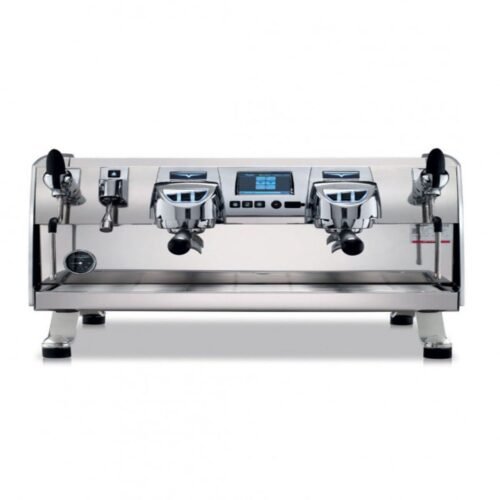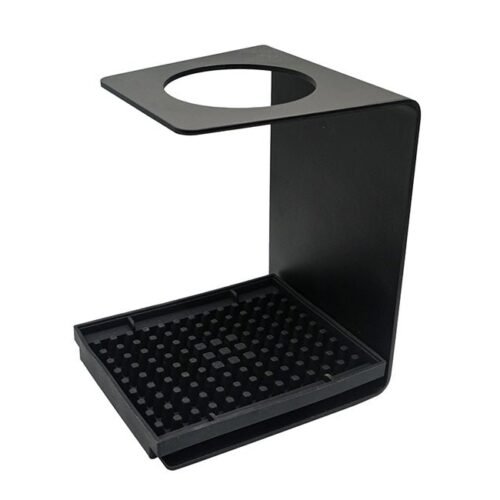Introduction to Extraction Processes
Extraction processes are essential techniques employed to separate specific substances from a mixture based on their distinct physical or chemical properties. This process enables the isolation of valuable compounds, making it a critical function across numerous industries, including chemistry, pharmaceuticals, food processing, and environmental science. The fundamental concept revolves around leveraging differences in solubility, volatility, or molecular weight, among other characteristics, to efficiently separate components from mixtures.
In the realm of chemistry, extraction techniques are pivotal in purifying chemicals and formulating new compounds. For instance, solvent extraction is a widely utilized method where a target substance is separated through its preferential solubility in a particular solvent relative to other components. This method is not only efficient but also instrumental in producing high-purity substances necessary for various applications.
Pharmaceutical industries also rely heavily on extraction processes to develop potent medicinal compounds from natural sources. Techniques such as supercritical fluid extraction have gained popularity for their ability to obtain bioactive compounds without damaging sensitive molecular structures. This enhances the efficacy and safety of pharmaceutical products, underscoring the importance of effective extraction methods.
Moreover, the food processing sector utilizes extraction techniques to derive essential flavors, aromas, and nutrients from raw materials. For example, the extraction of oils and essences from plants is accomplished through methods such as cold pressing or steam distillation, proving critical for food manufacturers aiming to create quality products.
Finally, in environmental science, extraction processes play a vital role in detecting and quantifying pollutants. Techniques like solid-phase microextraction are employed to isolate contaminants from environmental samples, aiding in monitoring and remediation efforts. The versatility and applicability of extraction methods underscore their significance in various fields, illustrating their profound impact on both industry practices and scientific research.
Types of Extraction Processes
Extraction processes are critical in various industries, enabling the separation of desired components from mixtures. These techniques can be broadly classified into several categories, including solid-liquid extraction, liquid-liquid extraction, and gas-solid extraction, each serving distinct purposes and applications.
Solid-liquid extraction, also known as leaching, involves the dissolution of soluble compounds from a solid matrix into a liquid solvent. An everyday application can be found in the food industry, where techniques like brewing coffee or tea extract flavor compounds from plant materials using water as a solvent. In pharmaceuticals, solid-liquid extraction is often employed to obtain active ingredients from raw plant materials, ensuring that the desired compounds are efficiently isolated for further processing.
Liquid-liquid extraction, on the other hand, involves the separation of compounds based on their different solubility in two immiscible liquids. This technique is essential in the chemical and petrochemical industries, where it is used to separate valuable solvents from waste products. An example is the extraction of essential oils from plant extracts, where organic solvents help isolate aromatic compounds based on their affinity to different phases.
Gas-solid extraction typically involves the extraction of volatile components from solid materials through a gaseous medium. This method is prevalent in environmental applications, such as the sampling of gases from contaminated soils or the extraction of volatile organic compounds (VOCs) for air quality analysis. Its efficiency in capturing minute quantities of target compounds makes it indispensable in analytical chemistry.
Innovations in extraction techniques, including supercritical fluid extraction (SFE) and microwave-assisted extraction (MAE), have further enhanced the efficacy of traditional methods. SFE utilizes supercritical CO2 as a solvent, offering a sustainable alternative for extracting natural products. MAE employs microwave energy to facilitate quicker and more efficient extraction, reducing solvent usage and processing time. These advanced methods reflect ongoing advancements in extraction technologies, emphasizing efficiency and sustainability.
Principles of Extraction: Solubility and Partitioning
The extraction process is fundamentally rooted in the principles of solubility and partitioning, which dictate the efficiency and effectiveness of extracting desired substances from mixtures. Solubility refers to the ability of a substance to dissolve within a solvent, leading to the formation of a homogeneous solution. When considering extraction, the solubility of the target compound in various solvents dramatically influences the recovery rate. For example, a substance that is highly soluble in a chosen solvent will typically yield higher extraction efficiency compared to one that is poorly soluble.
Partitioning, on the other hand, involves the distribution of a solute between two immiscible phases, often a liquid-liquid system. The partition coefficient, defined as the ratio of the concentration of a solute in one solvent to that in another, is a key factor in liquid-liquid extraction processes. A favorable partition coefficient indicates that the solute preferentially dissolves in one of the solvents, enhancing extraction potential. This parameter is influenced by both the chemical nature of the solute and the solvents used, highlighting the importance of selecting the right solvent for optimal extraction results.
Several factors can further affect the extraction process, including temperature and pressure. Increasing temperature often enhances the solubility of solids and liquids, potentially improving extraction efficiency. However, it can also lead to changes in the partition behavior of solutes. Similarly, the application of pressure can alter the solubility dynamics, making supercritical fluid extraction a valuable technique for certain applications. In conclusion, understanding the scientific principles of solubility and partitioning is crucial in the design and implementation of effective extraction processes across various fields, ranging from pharmaceuticals to environmental studies.
Equipment and Technologies Used in Extraction
Extraction processes rely on a diverse array of equipment and technologies, which can significantly influence the efficacy and efficiency of the extraction. Traditional equipment such as Soxhlet extractors and macerators have long been utilized for various extraction tasks. The Soxhlet extractor, in particular, functions continuously, allowing for the repeated extraction of a soluble compound, which can enhance yield and purification. This method is ideal for solid samples and requires careful temperature control to avoid degradation of sensitive compounds.
Maceration, on the other hand, involves soaking solid materials in a solvent, allowing for diffusion of the desired compounds into the solvent. This technique is relatively simple and cost-effective, though it can be time-consuming and may require multiple cycles to achieve optimal extraction. Both Soxhlet extractors and macerators remain prevalent in laboratories due to their straightforward operation and effectiveness for many applications.
In contrast, modern technologies have expanded the horizons of extraction processes significantly. Automated liquid handlers, for instance, streamline the extraction process, improving reproducibility and reducing the risk of human error. These devices can accurately dispense precise amounts of solvents and manage multiple samples simultaneously, which is essential for high-throughput applications. Solid-phase extraction devices also represent a critical advancement in extraction technology. They utilize sorbents to selectively capture analytes from a mixture, enabling clean-up and concentration of samples prior to analysis.
When selecting equipment for extraction, it is crucial to consider various factors such as the nature of the sample, the desired purity of the extracted component, and the scale of the operation. The appropriate choice of equipment can dramatically affect the overall success of the extraction process, making it essential for researchers and manufacturers alike to weigh their options carefully.
Applications of Extraction in Various Industries
Extraction processes play a pivotal role in numerous industries, showcasing their versatility and significance. In the pharmaceutical sector, extraction is essential for drug formulation. One notable example is the extraction of active compounds from plants. The usage of solvents such as ethanol and methanol enables the isolation of therapeutic agents from botanical materials, providing a basis for various medications. A case study highlighting this application involves the extraction of alkaloids from the opium poppy, which has led to the development of powerful analgesics.
In the food and beverage industry, extraction techniques are employed to enhance flavors and aromas. Cold-press extraction is a favored method for obtaining essential oils from herbs and fruits, which are subsequently used in culinary applications and fragrance manufacturing. For instance, the extraction of citrus oils from oranges and lemons not only preserves their aromatic properties but also enriches food products with natural flavor. This process highlights how extraction contributes to both quality and authenticity in food production.
Another crucial application can be found in environmental science, particularly in pollution management and remediation. Techniques such as liquid-liquid extraction facilitate the removal of contaminants from water sources. For instance, the extraction of heavy metals from industrial wastewater can significantly mitigate environmental impact. A notable case was the use of solvent extraction processes to recover and remediate lead from contaminated sites, showcasing the effectiveness of extraction techniques in addressing environmental challenges.
The diverse applications of extraction processes in these industries underline their importance. By enabling the recovery of valuable substances, extraction not only enhances product quality but also supports sustainability efforts through efficient resource utilization and pollution reduction.
Challenges and Limitations of Extraction Processes
Extraction processes play a pivotal role in various industries, from pharmaceuticals to food production. However, these processes often face several challenges and limitations that can impact their effectiveness and sustainability. One primary issue is selectivity, which refers to the ability to isolate specific compounds without extracting unwanted materials. Many traditional extraction methods may not provide the desired selectivity, leading to the co-extraction of impurities that can affect the quality of the final product.
Efficiency is another significant challenge. Extraction methods should ideally maximize yield while minimizing the quantity of raw materials needed. However, many conventional techniques are time-consuming and require extensive processing, which can result in lower overall efficiency. Additionally, some methods may not be able to meet the growing demand for high-quality end products, constraining industries that rely on these processes.
Environmental impacts present a critical limitation of various extraction methods. For instance, solvent-based techniques often involve harmful chemicals that can pose risks to both human health and ecosystems. The use of non-renewable resources in the extraction process can lead to significant environmental degradation. Recognizing these issues, researchers are actively seeking innovative solutions to minimize the harmful effects associated with extraction processes. This includes the development of greener extraction techniques, such as supercritical fluid extraction and ultrasound-assisted extraction, which aim to reduce solvent usage and enhance environmental sustainability.
Furthermore, the quest for more efficient and selective extraction processes involves continuous investments in technology and research. These advancements aim to improve process scalability and address existing limitations by implementing advancements in material science and engineering. Together, these efforts represent strides toward optimizing extraction processes while mitigating their associated challenges.
Safety Considerations in Extraction Processes
Extraction processes, widely utilized across various industries, inherently involve safety considerations that must be thoroughly understood and addressed. A fundamental aspect of these processes is the handling of chemical solvents, which often presents multiple hazards. Many solvents are flammable, toxic, or corrosive, necessitating robust protocols to manage their use effectively. Appropriate personal protective equipment (PPE), such as gloves, goggles, and respirators, must be worn to mitigate exposure to harmful substances. Furthermore, implementing proper ventilation systems is critical to dispersing harmful vapors and ensuring a safe working environment.
In addition to chemical hazards, high-pressure systems commonly employed in extraction pose significant risks. The operation of equipment under high pressure can lead to explosive failures if not managed properly. Safety measures, including pressure relief valves and regular maintenance checks, can help avert potential catastrophic incidents. Training workers to recognize and respond to pressure-related hazards is equally important. This ensures that workers are not only aware of the risks but also equipped to handle emergencies should they arise.
When it comes to biological extraction processes, safety considerations take on additional dimensions. The handling of biological materials may pose risks of contamination or exposure to pathogens. Strict hygiene practices and biosafety protocols must be established to contain any biological hazards. Training employees on safe handling techniques and the disposal of biohazardous waste is paramount in minimizing health risks. This encompasses understanding the implications of exposure and appropriate medical responses if needed.
Overall, prioritizing safety in extraction processes is essential for both personnel and the environment. By recognizing the potential hazards associated with chemical solvents, high-pressure systems, and biological materials, organizations can implement comprehensive safety measures. Such measures not only comply with regulations but also promote a culture of safety, ultimately safeguarding the well-being of all individuals involved in these critical operations.
Future Trends in Extraction Technology
The extraction industry is poised for significant transformation as innovative technologies and methodologies emerge. One of the most notable trends is the shift towards green extraction methods, which prioritize environmental sustainability. These techniques emphasize the use of non-toxic solvents and energy-efficient processes, aiming to minimize the ecological footprint of extraction activities. Advancing research in this area has led to the exploration of alternative solvents, such as ionic liquids and supercritical fluids, which offer effective extraction capabilities while reducing harmful emissions.
Additionally, the integration of artificial intelligence (AI) in extraction processes is gaining traction. AI can optimize various stages of extraction, from raw material selection to process monitoring and data analysis. By utilizing machine learning algorithms, operators can predict optimal extraction parameters, leading to enhanced yield rates and reduced waste. This technology allows for real-time adjustments, thereby improving efficiency and profitability while maintaining quality control. As AI continues to evolve, its application in extracting diverse compounds could revolutionize industries ranging from pharmaceuticals to food processing.
Biotechnological extraction techniques are also emerging as a pivotal trend. The use of enzymes and microbial systems in extraction allows for more effective separation of complex compounds. With advancements in genetic engineering, the potential to tailor specific strains for targeted extraction purposes is becoming increasingly feasible. These biotechnological methods not only improve efficiency but also align with the growing demand for sustainable practices and the use of renewable resources in production.
In summary, the future of extraction technology appears promising, driven by innovations that prioritize sustainability, efficiency, and customization. Through the continuous development of green techniques, artificial intelligence integration, and biotechnological advancements, the extraction industry is set to undergo significant evolution, enhancing its role in various sectors.
Conclusion: The Importance of Mastering Extraction Processes
Mastering extraction processes is essential for various fields, including pharmaceuticals, food production, and environmental analysis. These techniques enable the successful isolation of desired compounds from complex mixtures, which is pivotal for achieving high purity and efficacy in final products. Throughout this guide, we explored several extraction methods, such as liquid-liquid extraction, solid-phase extraction, and supercritical fluid extraction, showcasing their applications and relevance in today’s industry.
Understanding extraction processes can significantly enhance the efficiency and effectiveness of chemical separations. For instance, in pharmaceutical development, effective extraction techniques are crucial for isolating active pharmaceutical ingredients, ensuring that therapeutic products meet safety and quality standards. Similarly, in the food industry, extraction methods are employed to obtain flavors, colors, and nutrients, contributing to the overall quality of food products. The complexity and variety of these techniques underscore the need for professionals to be well-versed in their application to adapt to specific challenges across different sectors.
Moreover, mastering extraction processes promotes innovation in research and development. With growing environmental concerns, the industry’s shift towards greener extraction methods emphasizes the need for continuous improvement and understanding of those techniques. By fostering a deep comprehension of extraction processes, individuals and organizations can contribute to sustainable practices while maintaining product integrity.
In conclusion, comprehending the intricacies behind various extraction methodologies is critical for professionals aiming to excel in their fields. As the demand for high-quality products increases, so does the importance of mastering these essential techniques. We encourage readers to delve deeper into this fascinating subject, exploring how extraction processes can be optimized and adapted to meet the evolving needs of their respective industries.










